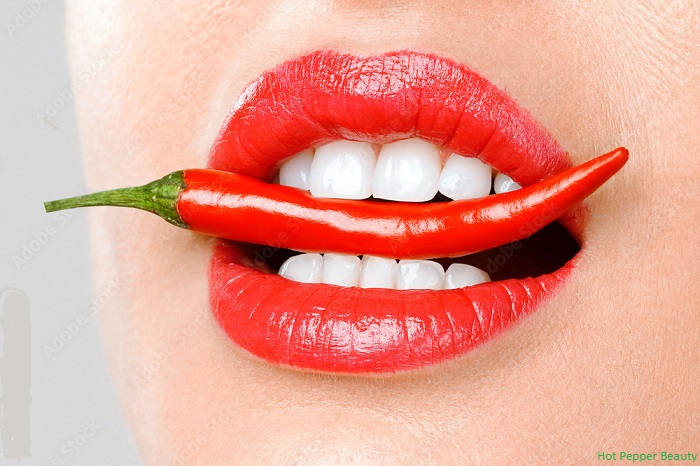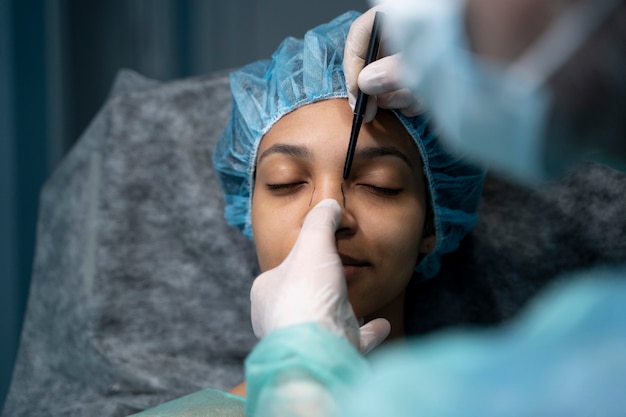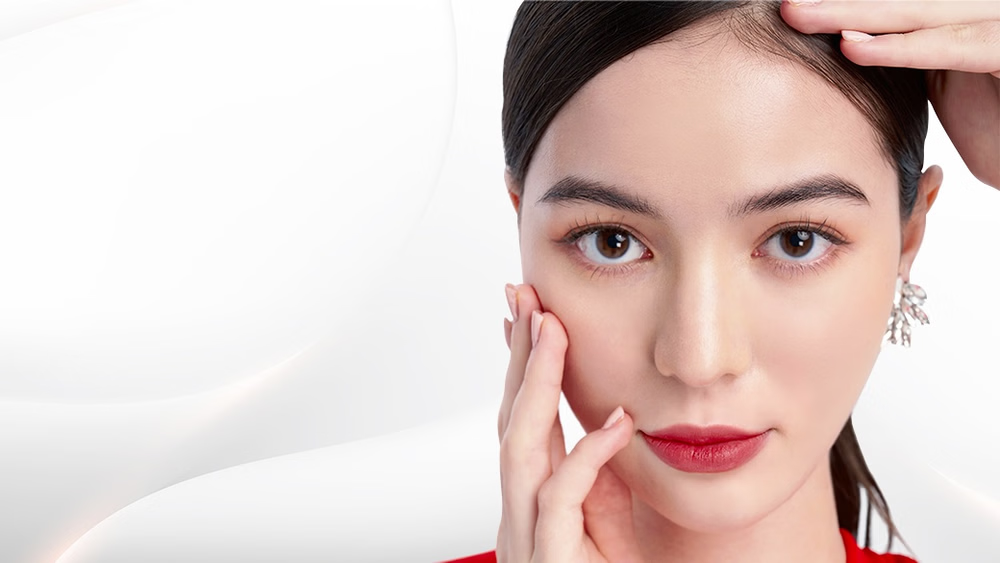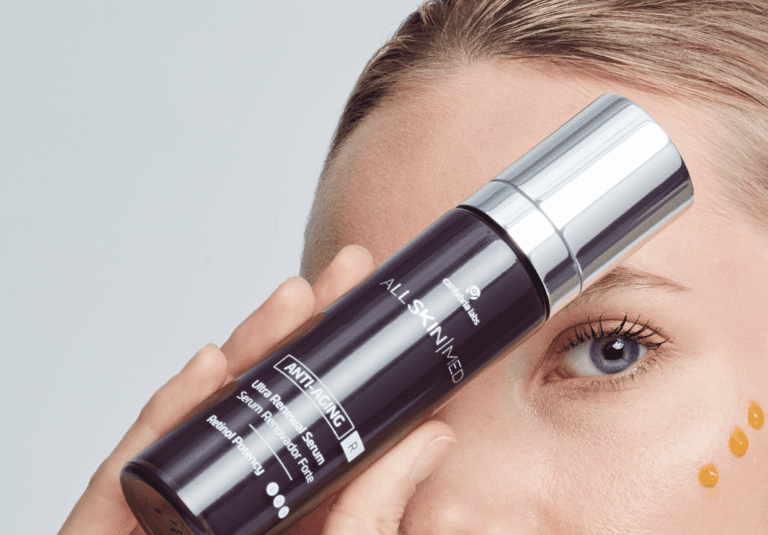Skin
Hot Pepper Beauty: Embracing Spice in Your Beauty Routine

Hot Pepper Beauty: A new hot pepper beauty trend is making waves in the beauty industry. Hot peppers, long prized for their spicy reputation in the culinary arts, are currently making waves in beauty, skincare, and hair care. However, what is hot pepper beauty exactly, and how can you use it in your regimen? Let’s examine the advantages and applications of hot peppers in beauty in more detail.
The Power of Capsaicin: A Hot Pepper’s Secret Weapon
Capsaicin, the ingredient that gives hot peppers their heat, is the essence of what makes hot peppers beautiful. For a considerable amount of time, capsaicin has been praised for its ability to reduce pain, enhance circulation, and even aid in weight loss. Capsaicin, an ingredient in cosmetic products, works its magic by promoting blood flow to the skin, giving it a radiant, natural flush.
Skincare: Rejuvenate and Revitalize
Vitamins A and C are found naturally in hot peppers, and they are both necessary for skin that is radiant and healthy. While vitamin C evens out and brightens skin tone, vitamin A aids in skin tissue healing and minimizes the appearance of wrinkles. Including hot pepper oils or extracts in your skincare routine can help revive and renew your skin, leaving you looking young and refreshed.
Haircare: Boosting Growth and Thickness
It has been demonstrated that capsaicin stimulates hair follicles, encouraging the growth and thickness of hair. Including products with hot pepper extract in your hair care regimen will help keep your hair strong and stop breaking. Hot pepper beauty products can help your locks shine by providing them with the necessary boost, whether they come in the form of shampoo, conditioner, or hair mask.

Makeup: Putting Some Flavor in Your Look
Hot pepper extracts can give your lips and cheeks a natural glow while adding a burst of color to your cosmetic regimen. If you want a tiny trace of color that lasts, look for lip balms or stains that contain extracts from spicy peppers. Additionally, for a warm, sun-kissed look, blushes and bronzers enhanced with hot pepper extracts are available.
DIY Beauty: Harnessing the Power of Hot Peppers
You can make your own hot pepper beauty products at home if you’re up for the challenge. To help you get started, here are a few easy homemade recipes:
One tablespoon of crushed spicy peppers and half a cup of olive oil are combined to make hot pepper hair oil. After 30 minutes of heating the mixture in a double boiler, drain the peppers out. After giving your scalp and hair a good massage, let the oil sit for half an hour, and then thoroughly rinse.

To make a capsaicin face mask, combine one teaspoon of hot pepper powder with one tablespoon of honey. Leave the mixture on your face for ten to fifteen minutes, being careful not to get any in your eyes. Rinse with warm water to get a revitalizing and tingling sensation.
For a spicy lip scrub, mix 1/2 teaspoon hot pepper powder, 1 tablespoon brown sugar, and enough coconut oil to form a paste. To exfoliate and perk up your lips, gently massage the scrub into them.
Safety Considerations:
Although there are many advantages to using hot pepper beauty treatments, it’s crucial to use them responsibly. Before using a new product extensively, always conduct a tiny patch test on your skin, especially if you have sensitive skin or are prone to allergies. As soon as you feel any irritation or pain, stop using the product.
Conclusion:
Considering all of the advantages that capsaicin has for skin and hair, hot pepper beauty is a fad that is sure to last. Hot pepper beauty products are beneficial whether you want to add a pop of color to your cosmetic routine, thicken your hair, or rejuvenate your skin. So why not try hot pepper beauty to add some spiciness to your beauty regimen?
Skin
How to Use Global Beauty Care Retinol Skin Cream
Skin
The Rarest Type of Nose: An Exploration of Distinction

The nose, a centerpiece of human physiognomy, stands as a hallmark of individual identity. While its primary functions—facilitating respiration and detecting aromas—are universal, the diversity in nasal forms is both staggering and fascinating. Some nose shapes dominate populations, while others are so rare they elicit wonder. But what, precisely, constitutes the rarest type of nose? Let us traverse the realms of anatomy, genetics, and cultural resonance to uncover the answer.
Anatomy and Variation: The Underpinnings of Nasal Uniqueness
Before delving into the extraordinary, it’s essential to comprehend the fundamental structure of the nose and the elements shaping its distinctiveness.
Structural Components of the Nose
- Nasal Bones: Form the upper bridge, lending foundational rigidity.
- Cartilage: Confers flexibility and shapes the tip and lateral contours.
- Nasal Septum: Divides nostrils, ensuring balanced airflow.
- Soft Tissue: Adds curvature and dynamic movement to the nose.
These elements, influenced by heredity, ethnicity, and environment, orchestrate a nose’s architecture.
Determinants of Nasal Morphology
- Genetic Blueprint: Nasal shape emerges from an intricate genetic interplay.
- Ethnic Adaptation: Ancestral climates mold nasal forms; slender noses prevail in frigid zones, while wider noses dominate humid locales.
- Age and Trauma: Time and injuries can subtly transform nasal aesthetics.
Recognizing Familiar Nose Types
Common nasal shapes abound across global demographics. Understanding these helps us appreciate the uniqueness of rarer forms.
- Roman Nose: Distinguished by a prominent, gently arched bridge; often depicted in classical sculpture, prevalent in European lineages.
- Button Nose: Petite and rounded with a slightly uplifted tip, often evoking youthful charm.
- Straight Nose: A linear bridge devoid of dips or curves, revered for its symmetry.
- Nubian Nose: A broad base coupled with an elongated bridge, celebrated within African diasporas for its striking allure.
- Hawk Nose: This shape exudes boldness, featuring a pronounced downward curve reminiscent of a raptor’s beak.

A rarity in Nasal Forms
Rare nasal configurations arise from genetic anomalies, evolutionary adaptations, or developmental peculiarities.
Noteworthy Rare Noses
- Fleshy Nose: Bulbous with pronounced soft tissue, less prevalent than streamlined shapes.
- Celestial Nose: Marked by a concave bridge and uplifted tip, its rarity lies in the pronounced upward tilt.
- Pinched Nose: A slim and tapered form, occasionally the result of surgical intervention or specific genetic traits.
The Pinnacle of Rarity: Uncommon Combinations
The rarest nose transcends individual traits, merging several uncommon attributes into one visage. For instance, a celestial nose paired with a profoundly sharp tip and exaggerated curvature is exceptionally unusual.
Genetic Conditions Yielding Unique Noses
- Binder Syndrome: Leads to an underdeveloped nasal bridge.
- Pierre Robin Sequence: Affects facial structure, creating recessed nasal features.
Cultural Perceptions of Rare Noses
Societal lenses magnify the significance of rare nose shapes, attributing symbolic and aesthetic value across epochs.
- In Media and Fashion: Unique noses captivate audiences, positioning their bearers as icons of individuality.
- Historic Standards: Ancient Egyptians prized slender noses for their perceived elegance, while Roman society lauded aquiline noses as emblems of authority.
- Contemporary Movements: Social media champions diversity, fostering an appreciation for distinctive features.
Genetics: The Architect of Nasal Rarity
Heredity and Evolution
- Inheritance Patterns: Unusual features often emerge from recessive traits passed discreetly through generations.
- Evolutionary Influence: Narrow noses, adapted for frigid air, and broad noses, efficient in humid climates, showcase humanity’s adaptability.
Surgical Crafting of Rare Noses
Modern rhinoplasty offers the possibility of replicating rare nasal forms, albeit with caution.
- Rhinoplasty Trends: Precision is paramount when emulating rare features.
- Balancing Risks: Overcorrection risks functional issues, underscoring the need for moderation.

Embracing Nasal Uniqueness
Whether common or extraordinary, the nose is a personal signature. Celebrating its individuality fosters self-acceptance and underscores humanity’s rich tapestry of diversity.
Conclusion
The rarest nose type defies singular definition, arising from a confluence of exceptional traits shaped by heredity, environment, and cultural perceptions. Its rarity enriches the spectrum of human beauty, reminding us that uniqueness is a virtue worthy of reverence.
FAQs
- What governs nasal shape?
Hereditary factors, cartilage structure, and environmental influences shape nasal appearance. - Can nasal shape evolve over time?
Yes, age and physical trauma can alter its form. - Are rare noses universally admired?
Attractiveness is subjective; rare noses often gain admiration for their distinctiveness. - Can surgery replicate rare shapes?
Yes, but achieving natural-looking results requires meticulous precision. - What’s the most prevalent nose type?
Button and Roman noses are among the most ubiquitous globally.
Skin
Eczema and Psoriasis on the Feet: Visuals, Root Causes,

Eczema and psoriasis stand among the most prevalent skin disorders affecting individuals across the globe. When these conditions manifest on the feet, they can cause significant discomfort and pose aesthetic dilemmas. This article delves into the origins, manifestations, and remedial options for eczema and psoriasis of the feet, supplemented by illustrative depictions.
Understanding Eczema: How It Manifests on the Feet
Defining Eczema and Its Underlying Triggers
Eczema, medically termed atopic dermatitis, is a chronic dermatological ailment characterized by inflammation, redness, and relentless itching. Common catalysts include allergic reactions, environmental irritants, and inherited predispositions.
Symptoms of Eczema on the Feet
- Parched, fissured skin.
- Reddened and swollen areas.
- Persistent itch, often intensifying nocturnally.
- Formation of vesicles in severe instances.
Visual Representations of Eczema on Feet
Individuals afflicted may observe inflamed, reddened patches or blistering. Imagery frequently aids in accurate visual diagnosis.
Psoriasis: A Chronic Autoimmune Condition with Distinctive Features
What Defines Psoriasis?
Psoriasis emerges as a chronic autoimmune disorder, spurring the overproduction of epidermal cells. This surplus accumulates, forming plaques frequently observed on the feet.
Manifestations of Psoriasis on the Feet
- It thickened, flaky skin.
- Reddish plaques are often veiled with silvery scales.
- Painful fissures or cracks in the skin.
- Nails may exhibit changes indicative of nail psoriasis.
Visual Evidence of Psoriasis on Feet
Typical depictions reveal heavily scaled skin with a silver-tinged overlay, highlighting the distinctiveness of this condition.

Differentiating Between Eczema and Psoriasis
Key Visual Contrasts
- Eczema: Features redness, oozing vesicles, and pronounced itchiness.
- Psoriasis: Exhibits dry, flaky plaques with silvery layers.
Diverging Etiologies
Eczema is often rooted in allergic hypersensitivity, whereas an autoimmune response drives psoriasis.
Treatment Modalities for Eczema and Psoriasis
Managing Eczema
- Moisturizing Agents: To counteract dryness.
- Topical Corticosteroids: For reducing inflammation.
- Allergen Avoidance: Identifying and steering clear of triggers.
- Natural Remedies: Coconut oil or colloidal oatmeal baths for soothing relief.
Treating Psoriasis
- Topical Applications: Corticosteroids or Vitamin D derivatives.
- Phototherapy: Exposure to UV light.
- Systemic Medications: Biologics or oral therapies for advanced cases.
- Home Solutions: Aloe vera or saline baths to ease symptoms.

Preventive Strategies for Eczema and Psoriasis on Feet
Skincare Routine
- Daily hydration with emollients.
- Use of gentle cleansers to avoid irritation.
Avoidance of Triggers
- Wearing breathable footwear.
- Mitigating stress, a known exacerbator of psoriasis.
Conclusion
Eczema and psoriasis affecting the feet can profoundly impact the quality of life. Through precise diagnosis, bolstered by visual indicators, and effective treatments, sufferers can find substantial relief. Consistent skin care and proactive avoidance of known triggers are indispensable in preventing recurrences.
FAQs
- How does foot eczema differ from fungal infections?
Eczema often presents as redness and dry skin, while white patches and a pungent odor typically mark fungal infections. - Can children develop eczema or psoriasis on their feet?
Yes, eczema is especially common among younger individuals. - What is the typical duration for treating foot psoriasis?
Treatment timelines vary based on severity, with chronic cases requiring long-term management. - Is it possible to have both eczema and psoriasis concurrently?
Although rare, it is feasible to experience both conditions simultaneously, necessitating distinct treatment plans. - Is there a definitive cure for psoriasis?
While psoriasis cannot be eradicated, its symptoms can be effectively managed through appropriate interventions.
-

 Skin9 months ago
Skin9 months agoNatural Oil-Free Face Moisturizer Reviews & Buyers Guide
-

 Hair3 weeks ago
Hair3 weeks agoDoes a Flat Iron Kill Lice? Fact or Myth?
-

 Hair9 months ago
Hair9 months agoDoes a Flat Iron Kill Lice? Fact or Myth?
-

 Skin8 months ago
Skin8 months agoAbout Face Beauty: Tips for Enhancing Your Natural Beauty
-

 Hair9 months ago
Hair9 months agoFunction of Beauty: Personalized Hair Care for Your Unique Needs
-

 Skin8 months ago
Skin8 months agoBeautiful Nails: Tips and Tricks for Healthy and Gorgeous Nails
-

 Hair9 months ago
Hair9 months agoTitanium Flat Iron vs. Ceramic
-

 DIY Cosmetics8 months ago
DIY Cosmetics8 months agoEmpire Beauty School:




